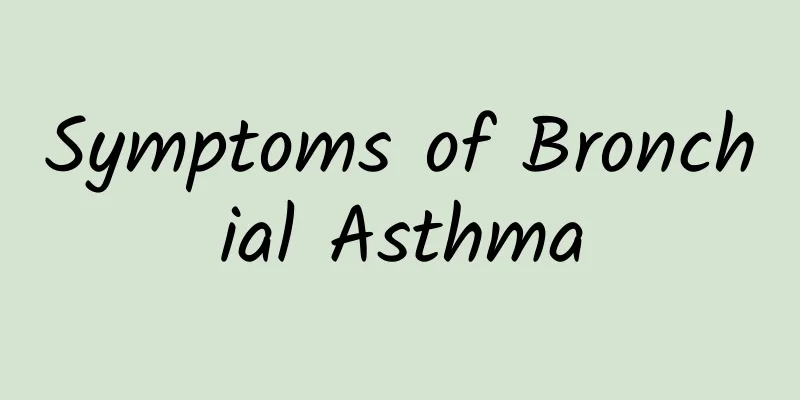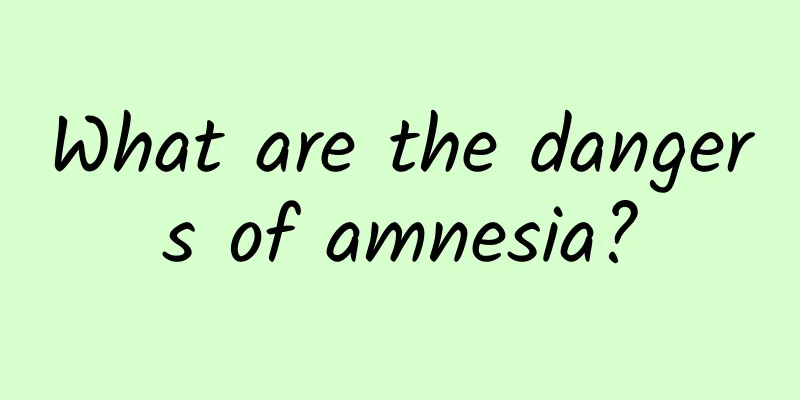Symptoms of Bronchial Asthma

|
People who suffer from asthma know that in certain seasons or when exposed to certain stimuli, asthma symptoms will appear, and bronchial asthma is also a type of asthma. This type of asthma is prone to relapse. Once you have this disease, it will cause recurrent episodes of wheezing, chest tightness and coughing. These are all common situations. Currently, the number of patients suffering from bronchial asthma in my country is increasing year by year, and many factors can cause people to suffer from this disease. There are many causes of bronchial asthma. The air in many places is now polluted, and the air pollution index in some cities is very high. Even the best lungs cannot withstand long-term exposure to such pollution. In addition to this reason, there are many other reasons. Let’s learn more about bronchial asthma. Typical bronchial asthma has precursor symptoms such as sneezing, runny nose, coughing, chest tightness, etc. before an attack. If not treated in time, asthma may occur due to worsening bronchial obstruction. In severe cases, the patient may be forced to sit or sit up to breathe, have a dry cough or cough up a lot of white foamy sputum, and even cyanosis. However, it can usually be relieved by itself or with treatment such as anti-asthmatic drugs. Some patients may have another attack after a few hours of relief, and even lead to a persistent state of asthma. In addition, there are atypical manifestations of asthma in clinical practice, such as cough variant asthma. Patients cough for more than 2 months without obvious causes. The symptoms often occur at night and early morning. Exercise, cold air, etc. induce aggravation. Airway reactivity tests show high reactivity. Antibiotics or antitussive and expectorant drugs are ineffective. The use of bronchial spasmolytics or corticosteroids is effective, but other diseases that cause coughing need to be ruled out. Depending on the presence or absence of allergens and the age of onset, it is clinically divided into exogenous asthma and intrinsic asthma. Exogenous asthma often occurs in childhood and adolescence, and often has a family history of allergies. It is a type I allergic reaction. Endogenous asthma often has no known allergens, occurs in adults, has no obvious seasonality, and rarely has a history of allergies. It may be caused by infection foci in the body. If you find yourself coughing, shortness of breath, and feeling stuffy recently, don't think it's a small problem. You must go to the hospital for relevant diagnosis to determine whether you have a disease. At the same time, we must prevent the occurrence of this disease in our lives. Take relevant preventive measures at home and wear a mask outside to prevent inhalation of excessive harmful particles. |
Recommend
Yang deficiency causes spots, Yin deficiency causes acne, and lung deficiency causes large pores and easy white blackheads.
Yang deficiency causes spots, Yin deficiency caus...
What to do with stoma hernia
With the development of society, people's liv...
What are the symptoms of intestinal gas
Patients with intestinal gas generally have very ...
Does wild rice stem need to be blanched?
The way to eat water bamboo is actually quite sim...
Glucose tolerance screening precautions
Glucose tolerance screening, also known as glucos...
Methods for regulating delayed menstruation, diet, exercise, etc.
Irregular menstruation and delayed menstruation m...
Can steaming in a steam room help you lose weight?
Nowadays, many health clubs can be seen everywher...
What to do if you get bruises when pressing your fingers
There are many dense blood vessels in the human b...
What diseases can eating dandelions cure?
Dandelion is a common wild vegetable. It has cert...
What is the TCM treatment for rhinitis?
Rhinitis is an inflammatory manifestation of the ...
What medicine is used for gout infusion
Gout is closely related to the disorder of purine...
Why do I drool when I sleep at night? It was these that caused
In daily life, drooling while sleeping is a very ...
Price of monk fruit
There is no doubt that nature is friendly to huma...
What are the early symptoms of adnexal cysts?
As the tumor grows, the patient will feel symptom...
Does it hurt to get anesthesia for a tooth filling?
When filling a tooth, sometimes anesthesia is nee...









